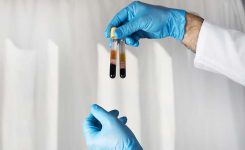Blog
i-STAT in the Neonatal Intensive Care Unit
The neonatal intensive care unit (NICU) serves the most vulnerable patients – newborn infants. With their defense systems still developing, the patients’ survival rely on the constant care of the NICU team. This level of responsibility, compounded with other challenges within the healthcare system, makes NICU one of the most taxing medical departments.
Challenges in the NICU
In tending to their patients, the NICU team usually face a variety of illnesses, ranging from genetic diseases to birth-related complications. The infants’ whole well-being must be taken into account as well, calling for the NICU team to provide complex multi-disciplinary care. They must also maintain a nurturing environment both for the infants and their families – all while making delicate decisions and performing intricate treatments. In addition to the inadequacies in staff, equipment, and space that hospitals usually have to deal with, the stress within their processes could easily affect the department’s performance.

This is particularly evident in their blood analysis procedures. The usual practice of sending samples to the central lab can significantly lengthen the process time. This could make the samples more susceptible to mishandling, mislabeling, and clotting. When the central lab encounters the untimely calibrations and maintenance for the analyzers, a bottleneck in samples is inevitable. Re-sticks and avoidable transfusions are also commonplace in this department. Babies can lose up to 15% of their already limited blood volume during a two-week stay. This is due to their still underdeveloped neonatal bone marrow and inability to sufficiently replace blood.
Where Patient-side Care Counts the Most
For infant patients, changes in their condition can occur drastically and fast. As a true point-of-care blood analyzer, the i-STAT suits this degree of patient-side monitoring best. With the i-STAT, the NICU could make crucial decisions in just minutes right by the patient’s bedside. This lets them quickly keep up and respond to their shifting needs. Since time is always of the essence in the NICU, the i-STAT is ready-to-use 24/7. Unscheduled maintenance and time-consuming calibration requirements will no longer be an inconvenient concern as well with i-STAT.

The i-STAT’s significantly reduced blood volume requirement keeps the patient from losing more blood than what is necessary. With just a couple of drops, the NICU could run numerous tests through i-STAT’s multi-parameter cartridges. Without the use of multiple analyzers, re-sticks and clotted samples are more effectively avoided.
Unparalleled Versatility
Of all the POCT devices, the i-STAT offers the broadest test menu. This allows for the testing flexibility required by multi-disciplinary departments like the NICU. Below are the key cartridges that i-STAT can provide for NICU. Each of the cartridges takes only 2 minutes to produce lab-quality results.
CHEM8+ Cartridge
Parameters:
Na
K
CI
iCa
TC02
Glu
BUN/Urea
Crea
Anion GAP
HCT
Hgb
CG8+ Cartridge

Parameters:
Na
K
iCa
Glu
Hct
Hgb
pH
PCO2
PO2
TCO2
HCO3
BE
sO2
EG7+ Cartridge
Parameters:
Na
K
iCa
Hct
Hgb
pH
PCO2
PO2
TCO2
HCO3
BE
sO2
G3+ Cartridge
Parameters:
pH
PCO2
PO2
TCO2
HCO3
BE
sO2








